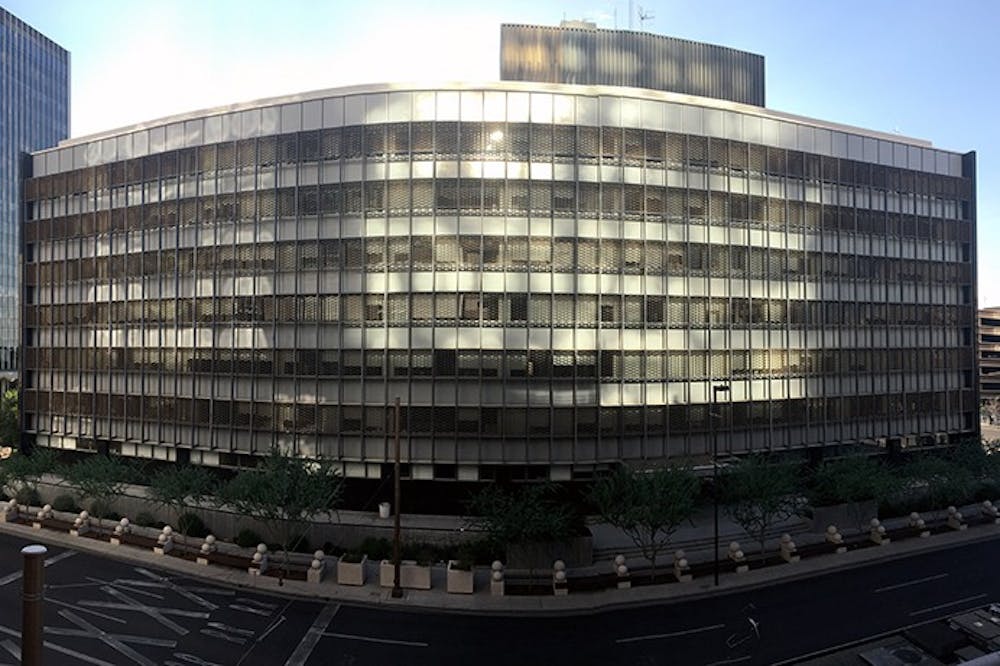Although the Great Recession ended seven years ago, Arizona college students continue to face difficulty in finding work, as the unemployment rate has risen for the fourth month straight, according to a Bureau of Labor Statistics report that was released last week.
According to the report, the unemployment rate has increased by 0.5 percent since April, bringing the state's average to an even 6 percent — one percent above the national average of 4.9 percent.
College students can bear the brunt of an economic downturn with the unemployment rate for 16- to 24-year-olds more than double the national unemployment rate, according to another BLS report.
ASU exploratory sophomore Stephen Perez said financial struggles are inevitable for many students.
“Students, if they don’t have scholarships, or financial aid or anything will be struggling for a long time to try and pay what they owe," Perez said. "Even if they don’t have to pay tuition: Car, house, bills, rent, whatever it is — they got to have an income to pay the bills, and they have to have a job to have an income.”
Perez's worries are a reality for students who have to pay their own way through college, especially when they come face-to-face with tuition increases. One of those students is Derek Hall.
Hall is a journalism freshman at ASU, and decided to go back to school at the age of 35. Although Hall is older than the average college student, his employment status is right in line with the collegiate status quo.
Coming to Arizona from Nashville, Tennessee, he found a job — although it doesn't quite make ends meet.
Hall works part-time as a valet at a local hotel. With an hourly wage of around $5 an hour plus tips, he delicately balances his attendance at school with his job. Hall does not fit into the category of unemployed, but given the unavailability of more feasible employment, he finds his choices for employment limited.
After tips, Hall said he barely makes more than minimum wage and embodies the underemployed worker.
“Somebody like me, I don’t have a choice, I have to work," Hall said. "Any problems with unemployment puts me in a position where I have to stay with a super low-paying job."
Hall works between 30 and 40 hours every week, and struggles to balance his time between school and work.
"I’m working for a job to pay for school that pays five-something an hour, because there just aren’t other opportunities for me to work, and go to school and pay my tuition," he said. "That’s a fact of my life."
However, not everyone is worried about the trend.
Economics professor Dennis Hoffman of the W.P. Carey School of Business believes that such a rate is not necessarily cause for alarm.
“Some workers are challenged to find employment opportunities despite a reasonably robust rate of overall job growth," he said. "This is likely due to skill mismatches.”
Hoffman said the skill sets of employees don’t fit with the needs of current employers, regardless of the overall health of an economy.
However, seasonal adjustment, which is a technique that analyzes data, while separating it from predictable factors such as weather patterns, holidays etc., is used to observe cyclical trends, according to the BLS, and may be influencing the rate of employment.
"Numbers suggest that seasonal adjustment factors may be influencing the rate," he said.
Seasonal adjustment is based off of estimation, meaning the data could be mistakenly skewed based off of incorrect adjustment according to the U.S. Census.
Hoffman said he looks forward to seeing where the trend may go in the future.
“It will be interesting to see if this trend continues into the fall or reverses itself," he said. "It will help us understand which of these factors is driving the rate.”
Reach the reporter at isaac.windes@asu.edu or follow @isaacwindeschef on Twitter.
Like The State Press on Facebook and follow @statepress on Twitter.




